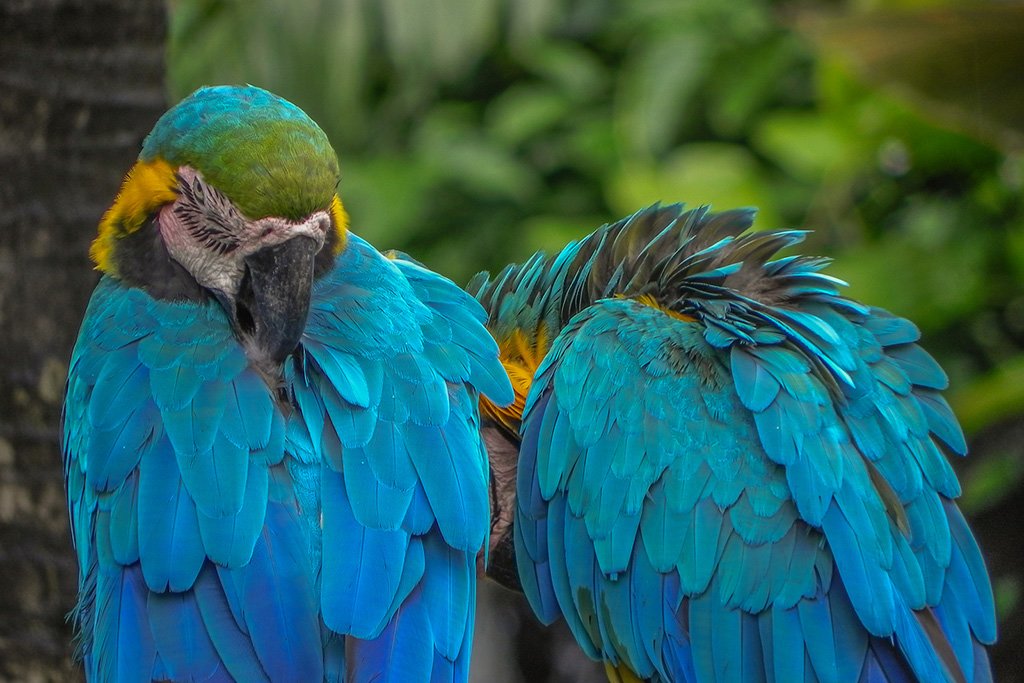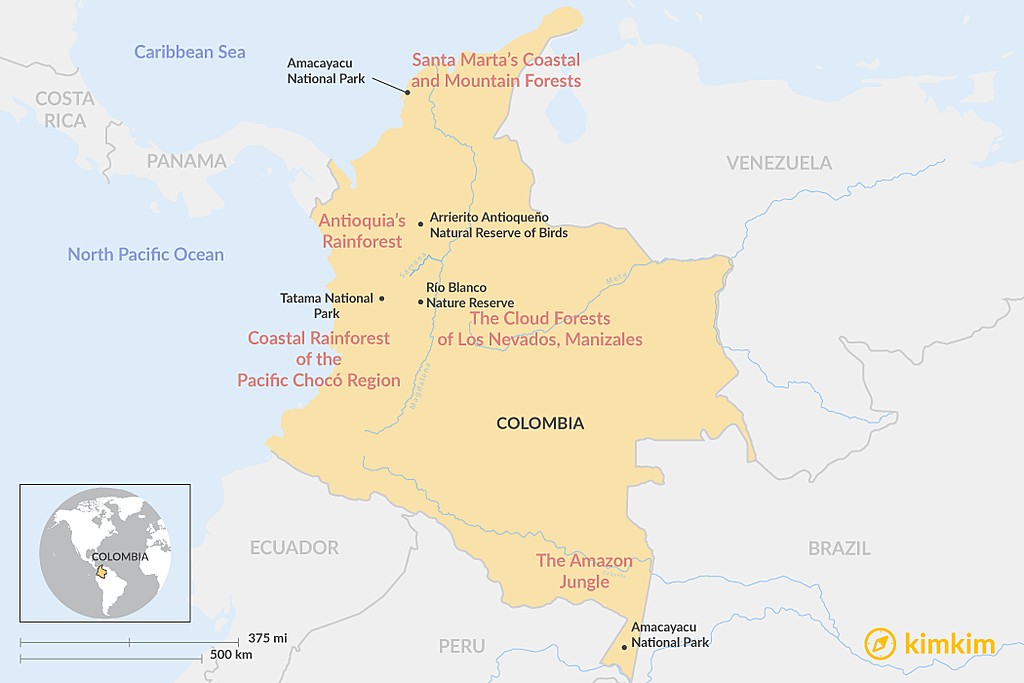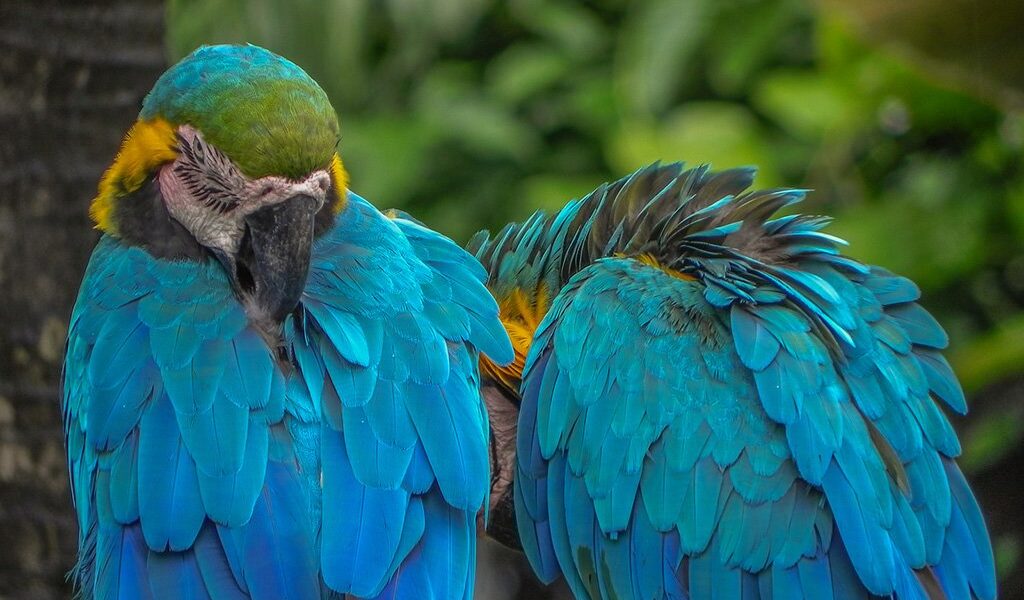
Colombia is one of the world’s best bird-watching destinations, containing more bird species — roughly 1,950 — than any other country on the planet. On top of that, 79 species are endemic to Colombia. Here is a list of the top 5 places to go birdwatching in Colombia.
## Unveiling Colombia: A Birdwatcher’s Paradise
Colombia, a land of vibrant culture and breathtaking landscapes, is also a haven for avian enthusiasts. The country boasts an astounding diversity of birdlife, making it a premier destination for bird watching. From the towering peaks of the Andes to the depths of the Amazon rainforest, Colombia offers a tapestry of habitats teeming with unique and colorful species. To truly appreciate the avian wonders of this South American gem, planning is key. Understanding the optimal locations and timing will significantly enhance your birding experience.
### Planning Your Birding Adventure
The best places to witness birds thriving in their natural Colombian environments are scattered across this biodiverse nation. Consider exploring the cloud forests of Los Nevados, the lowland tropical rainforest of the Pacific Chocó Region, or journey into the depths of the Amazon jungle. Each offers a distinct ecosystem teeming with a dazzling array of bird species, promising an unforgettable adventure. Further, The Santa Marta’s mountains and Antioquia’s humid sub-tropical forests should not be overlooked.
Irrespective of your chosen destination within Colombia, the most rewarding time for bird watching is undoubtedly at first light. Given Colombia’s proximity to the equator, this typically occurs around 6 am. This early hour offers the best opportunity to observe a multitude of birds as they begin their daily activities. For an even greater chance of spotting a wide variety of birds in a condensed timeframe, consider visiting renowned locations such as the Montezuma Lodge and road within the Western Andes / Chocó convergence point (located inside Tatama National Park). Alternatively, explore the Río Blanco Nature Reserve, situated near Manizales, or the Arrierito Antioqueño (Chestnut-capped Piha) Reserve and Rio Claro Nature Reserve, both within a comfortable three-hour journey from Medellin.
To truly immerse yourself in the experience and maximize your chances of identifying a diverse range of bird species, it is highly recommended to enlist the services of a knowledgeable local naturalist, biologist, or tour guide. These experts possess invaluable insights into the specific species that inhabit each area and can provide access to locations that would be difficult to navigate independently. Their expertise will greatly enhance your understanding and appreciation of Colombia’s remarkable birdlife. Each area is home to specific species, and it is overwhelming to learn – let alone access – these places without local knowledge.
## Discover Colombia’s Avian Treasures
Are you considering a trip to Colombia? Whether your interests lie in discovering the best birding spots, embarking on thrilling adventures, immersing yourself in the local culture, or experiencing a harmonious blend of all these elements, our team of local experts is dedicated to crafting the perfect trip tailored to your preferences.
## #1 Santa Marta’s Coastal Forests and Sierra Nevada de Santa Marta Mountains
Santa Marta stands as Colombia’s premier destination for bird watching, drawing enthusiasts from across the globe. The region’s abundant bird populations are readily accessible from the protected havens of Tayrona National Park and Vía Parque Isla de Salamanca. Further inland, the slopes of Minca and the San Lorenzo ridge, nestled within the Sierra Nevada de Santa Marta, offer even more opportunities for exceptional birding experiences. This majestic mountain range has earned the distinction of being named the world’s most irreplaceable concentration of biodiversity, a testament to its unique and fragile ecosystem. The incredible biodiversity arose because everything here has evolved in isolation over some 200 million years from the main Andean chains of Colombia.
The Santa Marta region is home to a remarkable number of endemic species, found nowhere else on Earth. These include the Santa Marta Parakeet, Santa Marta Screech-owl, Santa Marta Antpitta, Santa Marta Mountain-tanager, and the Santa Marta Tapaculo, each a testament to the unique evolutionary history of this isolated mountain range.
Within the sacred mountains of the Sierra Nevada de Santa Marta, a staggering twenty-two endemic species reside, sharing their home with Colombia’s tallest peaks. This region is also home to some of Colombia’s most emblematic birds, including the majestic Andean Condor (the national bird of Colombia), the threatened Black-and-Chestnut Eagle, and the Blue-billed Currasow, known locally as the ‘Paujil’.
In the higher altitudes of the mountains, the ProAves El Dorado Bird Reserve and the San Lorenzo Ridge offer unparalleled birding opportunities. Due to its well-earned popularity, the San Lorenzo Ridge boasts a number of bilingual birding guides, all experts on the local avifauna. These knowledgeable guides can be contacted through local tour operators. For budget-conscious travelers, the foothills of the Sierra Nevada near the town of Minca offer rewarding birding experiences, with a diverse range of species inhabiting the surrounding forests.
## #2 Antioquia’s Rainforest
The Andean Region of Colombia is a birding hotspot, hosting over 900 distinct bird species. The department of Antioquia, with Medellin as its vibrant capital, is characterized by a network of river systems that descend into the Magdalena River Valley. These waterways create lush rainforest habitats with biodiversity comparable to that found in the Amazon River rainforest.
The Samana River, for example, is a haven for a diverse array of bird species, including various parrots, toucans, tanagers, and other riparian birds. These birds feed on fish species, such as the bocachico, which is now unfortunately endangered. To fully appreciate the region’s avian treasures, consider hiring a local river specialist to guide you down the Samana River. Alternatively, take a public bus from Medellin to visit the Rio Claro Nature Reserve. To maximize your chances of spotting the rarest birds, such as the elusive Magdalena Antbird and Sooty Ant-Tanager, be sure to rise early and arrive before the crowds.
Venture farther north to discover the Arrierito Antioqueño Natural Reserve, a 1,324-hectare sanctuary dedicated to protecting the endangered Chestnut-capped Piha, an endemic bird of the region from which the reserve derives its name. In the areas surrounding the reserve, there have been sightings of birds such as the Black Tinamou and Sharpbill. Other notable species include the Stiles’ Tapaculo, Parker’s Antbird, Red-bellied Grackle, the stunning Multicolored Tanager, and the vibrant Black and Gold Tanager, among countless others.
## #3 The Cloud Forests of Los Nevados, Manizales
The cloud forests surrounding Los Nevados, near Manizales, offer a unique birding experience, supporting twelve of Colombia’s endemic species. These species are primarily restricted to the Central Andean chain of Colombia or Central Andes. Among these are the Brown-Banded Antpitta and Rufous-fronted Parakeet. Within a short 30-minute drive from the city of Manizales, you can encounter these exceptional species and many others within the 4,343 hectares of nature trails found in the cloud forests of the Río Blanco Nature Reserve. Renowned as one of the top three birding destinations in the world, Río Blanco Nature Reserve is especially famous for its diverse array of Antpitta species, a normally secretive genus of bird, which makes viewing exceptionally rewarding here.
Join an experienced local guide to search for high-altitude specialties in the nearby Los Nevados National Natural Park, a top trekking destination for all sorts of wildlife enthusiasts. Noteworthy birds to look out for include the endemic Buffy Helmetcrest hummingbird and the Andean condor, Colombia’s national bird. The Andean condor, the heaviest flying bird in the world, is capable of flying up to three hundred kilometers in a single day. Also, near Los Nevados, high up in a large patch of high-Andean forest, search for possibly Colombia’s rarest bird – the critically endangered and endemic Fuertes’s Parrot, the also endemic, vulnerable and simply beautiful Rufous-fronted Parakeet, and the stunning Rainbow-bearded Thornbill.
## #4 Coastal Rainforest of the Pacific Chocó Region
The biodiverse Pacific Chocó Region, along Colombia’s Pacific Coast, is home to approximately 650 distinct bird species. Among the best places to explore this region is the beautiful Bahia Solano, a charming surf town adjacent to the Utria National Park. Bahia Solano offers a range of beautiful lodges, providing ideal locations for bird watching. However, it’s important to note that access to this secluded oasis is primarily by air, as there are no roads leading into the town. To fully explore both Bahia Solano and Utria National Park, it is recommended to engage the services of a local guide.
Endemic species found in this region include the Baudó Oropendola, Baudó Guan, and Sooty-capped Puffbird. Other noteworthy species include the Harpy Eagle, Tawny-faced Quail, Brown Wood-Rail, Choco Tinamou, and Crested Eagle, making the Pacific Chocó Region a must-visit destination for avid birders.
## #5 The Amazon Jungle
The Amazon jungle, undisputedly Colombia’s true bird watching paradise, beckons with its unparalleled avian diversity. Home to over 750 bird species within the Colombian Amazon, representing one-third of the country’s overall bird population, this region offers an unforgettable birding experience. The various indigenous communities that neighbor the Amacayacu National Park offer comfortable accommodations for overnight stays, allowing visitors to wake early and explore the park’s 470 bird species, including the sought after Amazonian Umbrellabird and striking Hoatzin.
The ever-changing river islands found in the middle of the Amazon River also provide excellent birding opportunities. Spot species such as Osprey, Bat Falcon, Great Black Hawk, Cream-colored Woodpecker, and countless varieties of parrot, creating an unforgettable spectacle for bird enthusiasts.
Puerto Nariño, another ideal location within the Amazon, provides an excellent chance to observe flocks of more than twenty species of parrots. Parakeets, macaws, antbirds, and woodpeckers can be seen along the banks of the Amazon River.
## Best Season for Birding
While Colombia’s migratory species may come and go depending on the specific region, you are guaranteed to see the majority of Colombia’s birds at any time of the year. The climate remains fairly consistent year-round, and should not be a limiting factor for any region, yet expect rain in the Amazon and the Choco Pacific rainforest regions.
Care should be taken to try and avoid Colombia’s two rainy seasons: April to May and October to November. This applies to the Andes, mainly, though you should always check rainfall charts of the place that you’re going to visit to ensure that you get an accurate picture.
## Aviario National Park
For those seeking a guaranteed bird sighting experience, regardless of the season, consider visiting the Aviario National Park. Located 14.5 km from Cartagena, it holds around 138 bird species and 1,800 genetic copies, making it the largest aviary in the Americas. Walking along nature trails through the jungle and beach, you can see a fleet of pink flamingo, tropical birds, and birds of prey in three different ecosystems (rainforest, coast, and desert). Birds of note include the Harpy Eagle, the toucan Caribbean, Crane Corona. To avoid crowds, avoid traveling in the high tourist season during Easter week holiday and December to January.
## Ready to Start Planning Your Trip?
Our passionate Colombia birding experts are ready to help you craft the perfect tailor-made trip.

B-417

